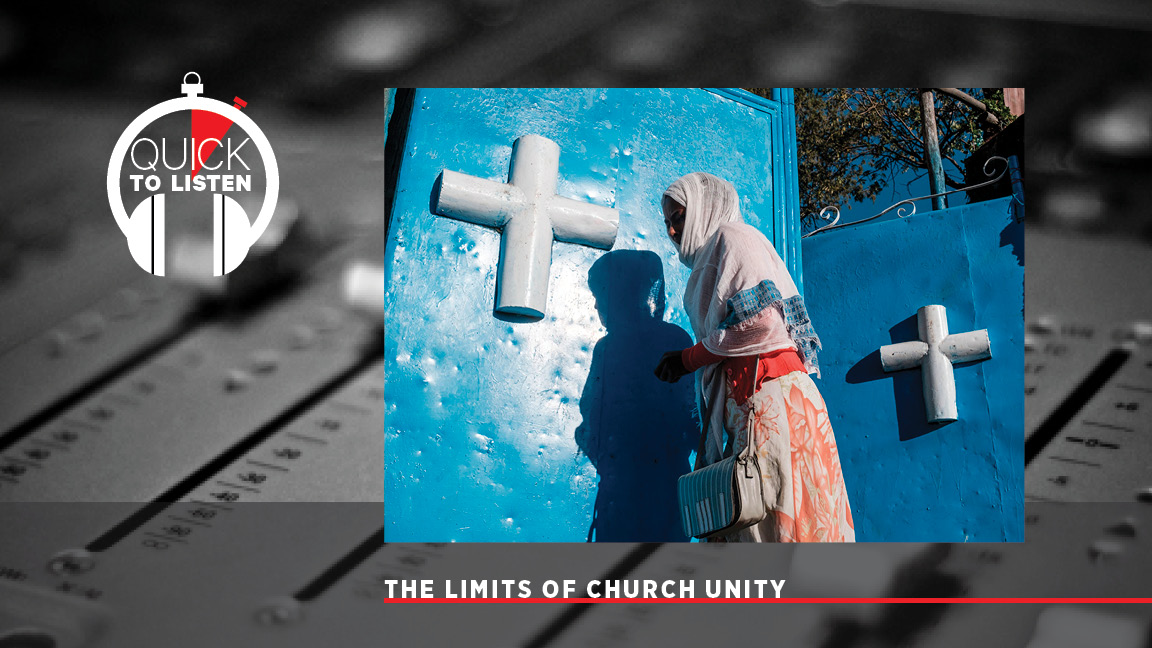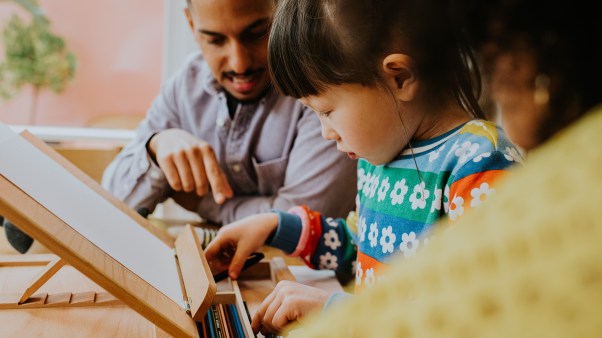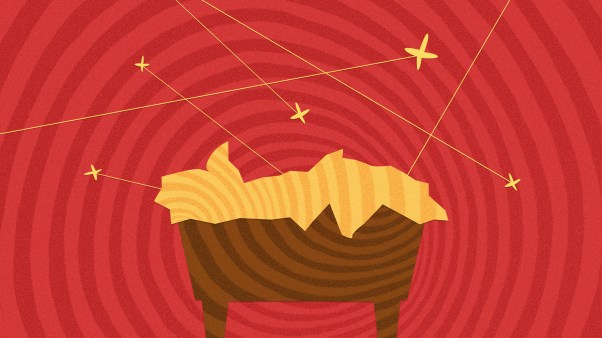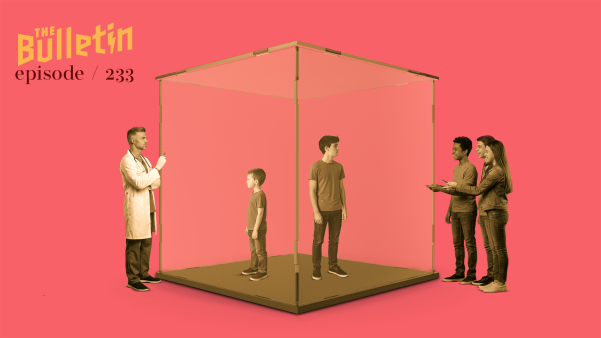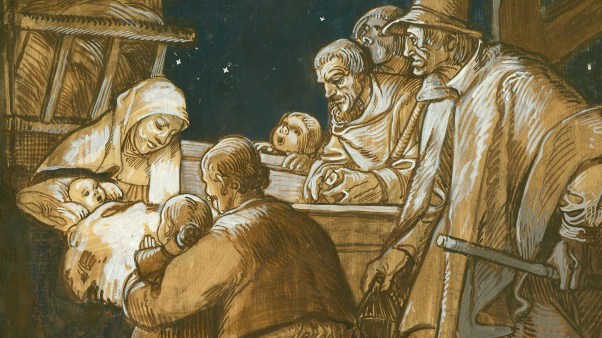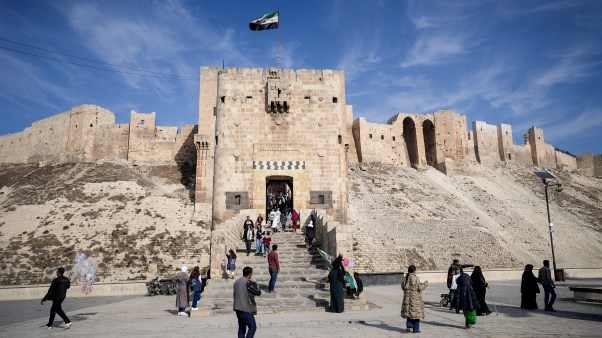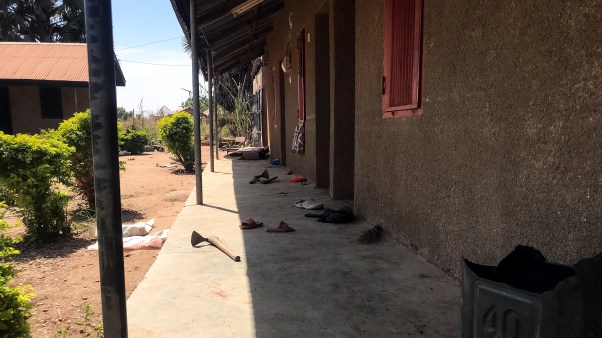In 2019, prime minister Abiy Ahmed won the Nobel Peace Prize. The committee noted that he had given amnesty to thousands of political prisoners, discontinued media censorship, fought against corruption, and legalized previously outlawed opposition groups. Abiy also received attention for his religious reconciliation work which included mending a split in the Ethiopian Orthodox Church and bringing together Christians and Muslims. The son of a Muslim father and Orthodox mother, Abiy is a Protestant Pentecostal, or “Pentay,” like many Ethiopian politicians.
But, as of late, things have been tense. CNN recently reported that scores of people were murdered last November by whom survivors believe are soldiers from nearby Eritrea, whose presence they blame on the Ethiopian government. The massacre occurred in the Tigray region, the northern part of the country and one which shares a border with Eritrea. It came just weeks after the Tigrayan People’s Liberation Front attacked Ethiopian military forces and the central government responded violently in return.
Ethiopia has a long and extensive Christian history. The second country in the world to officially adopt Christianity, for 15 centuries, the Ethiopian Orthodox Tewahedo Church has survived estrangement from Rome, the spread of Islam, and repeated colonialization attempts. There’s also millions of people, like Abiy, who identify as Protestant.
Desta Heliso was born and raised in Ethiopia and has served as lecturer and director of the Ethiopian Graduate School of Theology. He currently resides in London but continues to coordinate the Centre for Ancient Christianity and Ethiopian Studies at EGST in Addis Ababa. He is also a fellow of the Center for Early African Christianity and a visiting lecturer at the London School of Theology.
Heliso joined global media manager Morgan Lee and editorial director Ted Olsen this week to discuss this tragic and fraught conflict and to offer a robust picture of what Christianity looks like where more than 40 percent of the country identifies as Ethiopian Orthodox and nearly 25 percent as Protestant.
What is Quick to Listen? Read more
Rate Quick to Listen on Apple Podcasts
Follow the podcast on Twitter
Follow our hosts on Twitter: Morgan Lee and Ted Olsen
Follow our guest on Twitter: Desta Heliso
Music by Sweeps
Quick to Listen is produced by Morgan Lee and Matt Linder
The transcript is edited by Yvonne Su and Bunmi Ishola
Highlights from Quick to Listen: Episode #254
How are some of the largest ethnic groups in Ethiopia historically related to each other?
Desta Heliso: Ethiopia is a very large country and its journey to becoming what it is right now has taken centuries and perhaps millennia. The largest ethnic groups are the Oromo and Amhara groups. There are other groups as well, such as Tigray, Afar, Somali, Sidama, Gurage. The population of these groups is about 2 to 6 million. For example, the population of the Tigray region is about 6 million, but there are many small groups. Altogether, there are more than 80 different people groups in Ethiopia.
Historically, has there been peace of longstanding unrest between these communities?
Desta Heliso: They have related to each other through sharing land. Ethiopia has existed for millennia in Homeric references, poetic legends, heraldic writings, and the Greek Bible. The Hebrew Bible uses Kush, which represents the end of the earth and the extreme South, which might have included Nubia and the Arabian Peninsula, but we cannot be certain as to the territories.
Ethiopia as Sheba or Kush is represented, but Asian Ethiopia was much larger than the current one so that people groups who lived in different parts of Ethiopia. Different people shared land. They moved with the cartel from place to place.
They encountered each other. They competed for resources. They lived in peace with each other. They at times fought with each other, but they related to each other nevertheless. But when Islamic powers blocked the trade routes in the Red Sea, there was a lot of poverty. Food was scarce, so the kingdom moved southwards; the move was as much to spread Christianity as it was in search of resources. When Christianity spread in the thousand parts of Ethiopia, people mixed.
As a result, the Christian kingdom in the North moved to Islamic territories in the Southeast. There were at least seven Islamic principalities in the East and the Southeast. The Hadiya is the group I come from. The Hadiyas along with other sultanates fought against the Christian forces, but they lost the war.
There was a jihadist campaign led by an imam who organized many people groups and fought against the Christian kingdom. Although he was defeated and killed in the end, he had managed to penetrate the Christian Heartland and the North. This enabled those in the South and East to encounter one another and to encounter those in the North. They became neighbors and friends as a result.
What are the main things that have changed in how they relate to each other? When did they become a unified country?
Desta Heliso: There was a jihadist who wanted to establish an Islamic state in Ethiopia, but he was later defeated with the help of the Portuguese who were Catholic. After the war between Imam Ahmad and the Christian kingdom, the Oromos start to move towards different parts of the country. We call it the Oromo expansion.
The Oromos had supported the Imam and they had embraced Islam. They fought against the already weakened Christian kingdom and they occupied many territories in the North and South. They would adopt clans and those clans would covenant themselves to speak the Oromo language and to adopt the Oromo culture. They got involved in administration.
People related to one another, but there was a unitarian system there: one country, one flag, one religion, one language, one king.
To implement this policy, Orthodox Christian governors would move to different parts of the country and establish settlements that later became towns. Indigenous communities would mix with the new commerce and share their lives. Ethiopia was established as a united country, but it took many centuries to get there.
How did Protestantism take root in Ethiopia?
Desta Heliso: Missionaries were not successful during the 19th century. Missionaries who came during the early 20th century from the USA, Canada, United Kingdom, and other European countries like Germany, Sweden, and so on were successful.
They were advised to go to the West and the South as those parts regarded as pagan areas. Christianity was dominant in the Northern part. The last emperor of Ethiopia advised missionaries not to preach the Gospel as such, just to establish clinics, schools, and so on.
Everyone in the Protestant tradition is proud of the ancient Christian heritage. There is a lot of suspicion towards one another in Ethiopian Orthodox. Christians, particularly the leadership, would be suspicious towards the Protestants and vice versa. We still don’t have what we would call an ecumenical relationship.
What are some of the areas of mistrust within the church in Ethiopia?
Desta Heliso: If your appeal was a religious state, and state and religion were inextricably linked with one another, the emperor was the head of the church.
The soldiers were regarded as evangelists as well. They were taking the Gospel as well as a piece of Ethiopia. People did not know how to relate to God at the personal level. When Protestantism came, it introduced this personal relationship with God, and many people, particularly young people, were interested in that. When they started to become followers of the Protestant tradition, the Ethiopian Orthodox church leadership got nervous. They started to persecute using government structures and many problems were created. The Protestants were regarded as anti-Mary. Mariology is strong in Ethiopia.
She is worshiped outside of the church because there is a belief that she is the mother of God. That idea is probably stronger in Ethiopia than anywhere else. That created mistrust as well. I think it is mainly fear of losing control or membership. All that has created suspicion towards each other.
Is there an active discussion about modified statism?
Desta Heliso: The Ethiopian Orthodox Tewahedo Church is called the Church because Tewahedo means united or “being one.” The womb of Mary is the idea. Unity is emphasized in the Ethiopian Orthodox church.
In the 19th century, Emperor Yohannes from Tigray was a Tewahedo follower. He held a council in a place called Boru Meda. He was extremely biased. The Tewahedo party won the debate and others were killed. One of the unique elements in Ethiopian Orthodox Christianity is Christology. That goes back to Caledon, and it goes even back to the Council of Ephesus, where a man called Cyril of Alexandria argued very strongly that council should be held. After that, there was huge tension between the East and the West.
What would be a good analogy for the relationship between those families? Is it similar to how a Baptist might see a Lutheran?
Desta Heliso: Some Protestant Christians regard Ethiopian Orthodox Christianity as heresy. They accept the human-divine nature of Christ as separate, but that's not acceptable in the Ethiopian Orthodox church. Because of that, the Protestants who have accepted the Western idea would regard the Orthodox church as not heretical, but as mistaken. If I asked an Orthodox Bishop if they would support us in our attempt to promote a canonical relationship, they would say no. One bishop said to me, “We don't even have communion with the Eastern church. I studied in Russia, but we never had communion with them. We could study in their universities and seminaries, but we wouldn't have communion. We cannot have a close relationship with you, but I can visit your institution.”
I can have fellowship with you, but not ecumenical relationships. That is how they see each other.
Does the relationship between Ethiopian Christians in different communities change, such as the diaspora?
Desta Heliso: The Ethiopian Orthodox church maintains not only ancient Christian heritage but also ancient Ethiopian history.
There are lots of replicas of the Ark of the Covenant in Ethiopian churches. The story is that the British came to fight against Emperor Tewodros, who was a fanatic Christian who wanted to liberate Jerusalem from Muslims. When he sought support from Queen Victoria didn't get support, he fell out with her. He arrested some British people in Ethiopia and as a result the British sent troops and they fought against him. He committed suicide, but they took some artifacts from Ethiopia, including one tablet. This replica of the Ark of the Covenant ended up in a church in Scotland.
No one knew for maybe almost a century and a half, but someone who used to visit Ethiopia stumbled upon it. He informed the Ethiopian Orthodox church and people were sent to assess it, and it was indeed a piece of a tablet.
With a lot of celebration, it came from Scotland. I went to a church in central London where the celebration was taking place. We were celebrating together because it was being redeemed from the British. It was like a victory against the British.
The Ethiopian Orthodox church created the flag of Ethiopia: green, yellow, and red. It fought against external forces, particularly the Muslims, Egyptians, Sudanese, and also, Arabians. The Ethiopian Orthodox church maintained the nation's integrity. For that, all Protestants have a lot of respect for the church.
How did you become a Christian, and what were you raised to believe about other Christians?
Desta Heliso: My ethnic group is called Hadiya. It was sultanic and Muslim, but then they moved with their cartel towards the central part of the country and mixed with other religions. Their religion became synchronized with paganism or animism.
They followed a mixture of Islam and animism. When my father was born, my grandfather was mainly an animist. My father grew up as an animist worshiping stones, trees, and rivers, sacrificing to all those. But when he was a teenager, he converted to Christianity.
I'm a second-generation Christian from my father's side. But from my mother's side, I'm a third-generation Christian because my maternal grandfather became Christian and my mother was a Christian when she married my father. I was born into a Christian family, but I converted to the Christian faith. When I was nine. I didn't understand much, but I understood the Christian faith when I was in grade 10. Before that, I was part of the church system. I was singing and I was in a youth group but understanding started when I was a teenager.
As you became a Christian, what type of tradition were you brought up in?
Desta Heliso: I was brought up in what you might call a Baptist tradition. My church is called the Ethiopian Kale Heywet Church. Kale Heywet means word of life. It was planted by missionaries from Europe, Canada, and the USA in the 1920s and 1930s. Now the church has probably 9 to 10 million members and 9,000-10,000 congregations throughout the country. It is what they would call a semi-indigenous church.
Although we accept adult baptism as part of our doctrine, we have our tradition. It is not Baptist, but it is not fully indigenous either.
How have Ethiopian values and cultural practices been incorporated into the church community?
Desta Heliso: For example, the singing in Lutheran churches translated hymns from German or English into Amharic, and they sang the Ethiopian church mainly sang its songs. The traditional singing system was imported into the church and they contextualize that. We would sing something that sounded traditional but different, a Christianized way of singing.
Other practices were adopted as well, but not directly. There was a clear break between culture and Christian faith in my church. For example, dancing, drinking, and chewing weren’t allowed. Of course, witchcraft wasn't allowed.
Would you say that overall, Christianity has helped to unite the country in its diversity, or has it ended up dividing it?
Desta Heliso: I would say Christianity has helped unite these diverse people groups. When we talk about Christianity, of course, we are talking about Ethiopian Orthodox Christianity and Protestant evangelical Christianity. Catholic Christianity and Ethiopian Orthodox Christianity were more or less imposed on various communities.
For example, in the 19th century, there were forced baptisms. They took place in the northern part of the country. The majority of those who were forced to be baptized were Muslims; to this day, it is the way it’s remembered by many Muslims. Some Muslims returned to the form of faith, but many remained Orthodox. It was only partly successful and in the 20th century, in our area as well, Orthodox Christianity was imposed.
The reason why it was imposed was that it was regarded as a uniting religion. The empire was one empire. There was one king, one country, one flag, one religion. That unity was strengthened through the Ethiopian Orthodox.
The unity can be understood as political or it can be understood as ecclesiastical. Whether it represents the ethnic wall being broken is another question. In my view, the ethnic wall that divided one ethnic group from another wasn't necessarily broken down.
That happened when Protestant evangelical missionaries preached the Gospel about 90 years ago. There was always fighting with the neighboring ethnic groups. When they heard the Gospel of love, unity, and peace, they became friends with the neighboring tribes and even intermarriage started. In the past, they used to look down upon each other and they always tried to dominate one another. But those who accepted the Gospel came to love their neighbors. Unity was created, but of course, Protestantism has a divisive aspect as well.
What do people outside Ethiopia need to understand about the conflict?
Desta Heliso: First of all is the politics. What was the politics like before this conflict? A European country would call it a country of many tragedies. I'm just over 50 and in the last century, a lot has happened in Ethiopia. I have experienced several governments.
I didn't know a lot about the last Emperor, Haile Selassie. I was young when he was deposed and then he died. After that, there was a Marxist or military communist regime, and then the Ethiopian People’s Revolutionary Democratic Front was established by the People's Liberation Front, which was a Marxist group.
The country has gone through those political processes. Understanding the politics is important, but also making a distinction between the Tigray People's Liberation Front and Tigrayan people. People often mix the two. Although the Tigray People's Liberation Front comes out of the people of Tigray, the unity between the two is wrong. That needs to be corrected.
Why are Tigrayan civilians targeted? That comes out of the narrative that has been promoted in the West. In attempting to understand the politics, TPLF remained Marxist at heart, and it was covertly hostile to religion.
It was faithful to the principle of a secular state. It did not like religion that much. It introduced what we call ethnic politics, mixing ethnic identity with politics. Through that, ethnic federalism was created. Borders were defined. Each region was regarded as sovereign and Ethiopian sovereignty depended on the sovereignty of each region.
TPLF wanted initially wanted to create a Tigrayan state, but then they decided not to do that because that wouldn't be useful for the people of Tigray and economically it wouldn't make sense. They decided to rule the whole country and develop themselves through that.
At the end that project failed when change came along. The West needs to understand the political dynamics that have 80 ethnic groups. The Tigray People's Liberation Front tried to establish an ethnically determined political system.
When it failed to work, Abiy Ahmed came along and he introduced what he called the politics of medemer meaning to be added up. Some people translate it as synergy. Because ethnic politics hasn't worked and one unit, one nation, one flag, one religion did not work. That is called the unitarian system.
He felt that the two should come together. Ethnic identity should be respected, but also the nation should be seen as a sovereign, united nation. It was that idea that led to the conflict between Abiy Ahmed and the Tigray People's Liberation Front because they wanted to maintain the sovereignty of the region.
Of course, that was leading to all sorts of ethnic conflicts in different parts of the country, and that was going to destroy the country in the end.
Some reports show the attacks happening in the vicinity of churches. What do we know about these situations and what do they reveal about Christians and the church at large?
Desta Heliso: Many of the reports are not verified at all. I raised questions on this report about St. Mary of Zion church. In the beginning, they said 750 people were dragged out of that church and they were shot outside. That story changed. The city changed and they came up with was another story. They said Eritrean Ethiopian and Amhara forces were two different houses.
They did a house-to-house search and they drag people out of there. On the 29th of November, they massacred hundreds of people. But on the 30th of November, there was a celebration, the feast of St. Mary's. There were hundreds, maybe thousands of people.
There were federal police forces who were there to ensure security. I wondered Had hundreds been massacred on the 29th of November, would thousands have come out on the 30th to celebrate?
There was a priest who gave an account. He claimed that he was in Axum when that massacre happened, but that priest happened to be someone who resides in Boston. He was what I would call a fake priest.
I was quite disappointed at the way these reports were presented. For example, Amnesty International interviewed 41 survivors and witnesses. 21 of them were in Eastern Sudan. They were refugees. Where did they go from Axum to Eastern Sudan? It is 400 kilometers that they walk to the refugee camp.
I would like the Western audience to try to raise questions on all the reports, particularly the CNN report. We have to stand for the truth and the truth should be respected.
What are your thoughts when you look at reports covering Ethiopia?
Desta Heliso: This reporter, although she received that video from someone, was she there? Did she interview people on the ground, or she just received the video and reported on it? That would be my question. If you look at the video, many questions should be raised.
Ethiopia is in trouble because Egypt would like Ethiopia to stop building the dam. To ensure that Ethiopia stops building the dam, Egypt supports different groups and it also used to support the TPLF, the Tigray People's Liberation Front.
As soon as TPLF forces attacked the Ethiopian forces, the federal Sudan forces entered Ethiopia. It invaded some territories on the Ethiopian-Sudanese border. That shows that there was some coordination in the operation. What will be the outcome of all that? If these geopolitical forces succeeded, Ethiopia will be fragmented as a nation. We're facing a dangerous situation and I don't think that reporters appreciate that.
Any alleged atrocities should be investigated. Different government structures can do that and Western governments and institutions can support them, but false reporting or unverified reporting doesn't help Ethiopia at all. It will lead to further fragmentation and problems.
What would you like listeners to pray for the church during this time?
Desta Heliso: I would like people to pray for peace in Ethiopia. I think that's critical for Ethiopia–a peaceful, democratic, and fair election in June. The situation in Ethiopia is going to get from bad to worse with ethnic tensions that resulted partly from human fallenness and partly from the kind of politics that was promoted in Ethiopia for the last 30 years. People are unsure now because their ethnic identity has become extremely important.
They are unsure whether their Christian faith has primacy over the ethnic identity. Am I Christian second and Ethiopian third? Or am I Christian first? People are confused at the moment. Many would say their ethnic identity comes first.
That has led to a lot of tensions within and outside the church. I would like sisters and brothers in the West to pray for the Ethiopian church to understand that Christ came to this world to promote love and unity and to preach peace, to be the Prince of peace.

